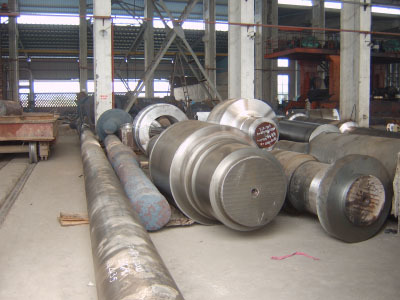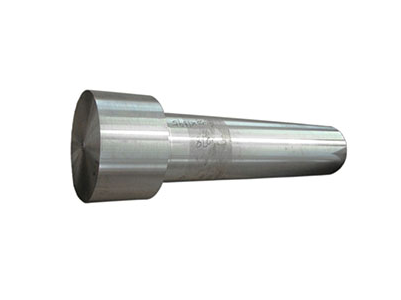Unlocking Efficiency: The Importance of Forged Roller Step Shafts in Shipbuilding
Release Time:
Oct 16,2025
Unlocking Efficiency: The Importance of Forged Roller Step Shafts in Shipbuilding Table of Contents 1. Introduction to Forged Roller Step Shafts 2. What Are Forged Roller Step Shafts? 3. The Manufacturing Process of Forged Roller Step Shafts 4. Applications of Forged Roller Step Shafts in Shipbuilding 5. Advantages of Using Forged Components in Marine Engineering 6. Compar

Unlocking Efficiency: The Importance of Forged Roller Step Shafts in Shipbuilding
Table of Contents
- 1. Introduction to Forged Roller Step Shafts
- 2. What Are Forged Roller Step Shafts?
- 3. The Manufacturing Process of Forged Roller Step Shafts
- 4. Applications of Forged Roller Step Shafts in Shipbuilding
- 5. Advantages of Using Forged Components in Marine Engineering
- 6. Comparison with Other Shaft Materials
- 7. Future Trends in Forged Roller Step Shafts
- 8. Frequently Asked Questions
- 9. Conclusion
1. Introduction to Forged Roller Step Shafts
Forged roller step shafts play a pivotal role in the shipbuilding industry, enhancing operational efficiency and overall performance. As vessels become larger and more complex, the demand for high-quality components like forged shafts is on the rise. This article will delve into the importance of these components, exploring their manufacturing processes, applications in shipbuilding, advantages over other materials, and future trends.
2. What Are Forged Roller Step Shafts?
Forged roller step shafts are specialized components designed to transmit power and motion in various machinery, particularly in marine applications. These shafts are manufactured through a forging process, which involves shaping metal using compressive forces. This method enhances the material's strength and durability, making forged shafts ideal for high-stress environments typical in shipbuilding.
Types of Forged Roller Step Shafts
Different types of forged roller step shafts serve various functions in shipbuilding. They can be categorized based on their design, length, and intended application. Common types include:
- **Straight Shafts:** Most commonly used for direct power transmission.
- **Stepped Shafts:** Designed to accommodate multiple components or gears.
- **Hollow Shafts:** Lighter and often used when weight reduction is essential.
3. The Manufacturing Process of Forged Roller Step Shafts
The manufacturing of forged roller step shafts involves several critical stages, ensuring a high-quality final product. The process typically includes:
Material Selection
The first step is selecting appropriate materials, often high-strength steel alloys, which provide the necessary mechanical properties.
Heating and Forging
The selected material is heated to a specific temperature, making it malleable. It is then forged using hydraulic presses or hammers to achieve the desired shape.
Machining Operations
After forging, the shafts undergo machining operations to refine their dimensions and surface finishes, ensuring they meet strict tolerances.
Heat Treatment
Heat treatment processes enhance the strength and fatigue resistance of the shafts, vital for their performance in demanding marine environments.
Quality Control
Finally, rigorous quality control measures are implemented, including non-destructive testing, to ensure the shafts meet the required standards.
4. Applications of Forged Roller Step Shafts in Shipbuilding
Forged roller step shafts are essential in various shipbuilding applications, including:
Propulsion Systems
The primary application of these shafts is in propulsion systems, where they transmit power from the engine to the propeller, ensuring efficient movement through water.
Power Generation
In larger vessels, forged shafts are integral to power generation systems, connecting turbines and generators to provide the necessary electrical output.
Auxiliary Machinery
These shafts are also used in various auxiliary machinery, including pumps, compressors, and winches, supporting a wide range of operational functions aboard ships.
5. Advantages of Using Forged Components in Marine Engineering
The use of forged roller step shafts in shipbuilding comes with numerous advantages, including:
Enhanced Strength and Durability
The forging process significantly increases the strength of the material, making forged shafts more durable and resistant to fatigue compared to cast or machined components.
Improved Performance
Forged shafts provide superior performance under extreme conditions, ensuring reliability and efficiency even in harsh marine environments.
Weight Reduction
Forged components can be designed to be lighter without sacrificing strength, which is critical in shipbuilding where weight optimization is crucial for fuel efficiency.
Cost-Effectiveness
While the initial manufacturing cost may be higher, the long-term benefits, including reduced maintenance and longer service life, make forged roller step shafts a cost-effective choice.
6. Comparison with Other Shaft Materials
When considering the best materials for shaft manufacturing, forged roller step shafts often outperform other options such as cast iron or fabricated shafts.
Forged vs. Cast Shafts
Cast shafts may be less expensive but often lack the strength and fatigue resistance of forged shafts. The forging process eliminates internal defects present in cast materials, resulting in a more reliable product.
Forged vs. Machined Shafts
While machined shafts can be produced with high precision, they often do not match the mechanical properties of forged components, making forged options preferable for critical applications.
7. Future Trends in Forged Roller Step Shafts
As technology advances, the shipbuilding industry is experiencing significant changes. The future of forged roller step shafts is evolving with several key trends:
Integration of Smart Technologies
The incorporation of smart sensors in forged shafts will enable real-time monitoring of performance and wear, improving maintenance and operational efficiency.
Sustainability Initiatives
There is a growing focus on sustainable manufacturing practices, with shipbuilders looking for ways to reduce waste and environmental impact during the production of forged components.
Advanced Materials
Research into new materials and alloys will likely lead to the development of even stronger and lighter forged shafts, enhancing their performance in shipbuilding applications.
8. Frequently Asked Questions
1. What is the primary function of forged roller step shafts in ships?
Forged roller step shafts primarily transmit power from the engine to the propeller and other machinery, ensuring efficient operation.
2. How do forged shafts compare in strength to cast shafts?
Forged shafts are generally stronger and more durable than cast shafts due to the forging process that enhances their mechanical properties.
3. Are forged roller step shafts more expensive than other types?
While the initial investment in forged shafts may be higher, their longevity and performance often result in lower overall costs.
4. What materials are typically used for forging roller step shafts?
High-strength steel alloys are commonly used for manufacturing forged roller step shafts due to their excellent mechanical properties.
5. How is the quality of forged roller step shafts ensured?
Quality is ensured through rigorous testing and inspection processes, including non-destructive testing and adherence to strict manufacturing standards.
9. Conclusion
Forged roller step shafts are essential components in the shipbuilding industry, contributing significantly to operational efficiency and reliability. Their superior strength, durability, and adaptability make them ideal for various applications. As advancements in technology and materials continue to shape the industry, the future of forged roller step shafts looks promising. Investing in high-quality forged components will not only enhance the performance of vessels but also support sustainable practices in shipbuilding, ultimately unlocking greater efficiency and effectiveness in maritime operations.
多行文本内容元素
富文本内容绑定数据后可解析HTML语言内容
Key words:
News Hotspot








